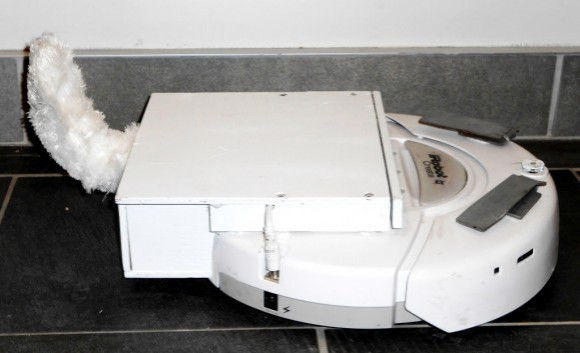

The IEEE unearthed a fascinating 2013 study that showed that a cute dog tail does more than just amuse — it can communicate.
The study, created by Ashish Singh and James Young, posited that a Roomba with a tail attached could communicate quickly and easily with a human — a fast, excited wag means things are going OK, while a slow side to side motion shows disdain.
“Any current robot that works with people, including factory transport robots, emerging domestic robots, even collocated utility robots such as the PackBot, could benefit from this,” Young said.
The question is where and when will we use these doggy tails? An expressive tail or other body part could be a cheap way to add human computer interaction without the cost of a speaker or microphone. Obviously this presupposes that future robots would be so ubiquitous that we’d have “cheap” and “expensive” ones but, as the toy market shows us, even the most rudimentary beeps, boops and giggles can make us fall in love with our Furbies, Pleos and Hatchimals.
In fact, the folks at the University of Manitoba are using “visual cues” to signal human users via live video feeds, increasing the probability that they notice important information before it’s too late. The department is also working actively on improving empathy in robots, and recently tested whether a simulated, on-screen robot was more empathy-inducing than a real one. The result? People felt sorry for real robots far more than they felt sorry for on-screen ones.
I, for one, welcome our empathy-inducing fluffy tailed robotic overlords.

